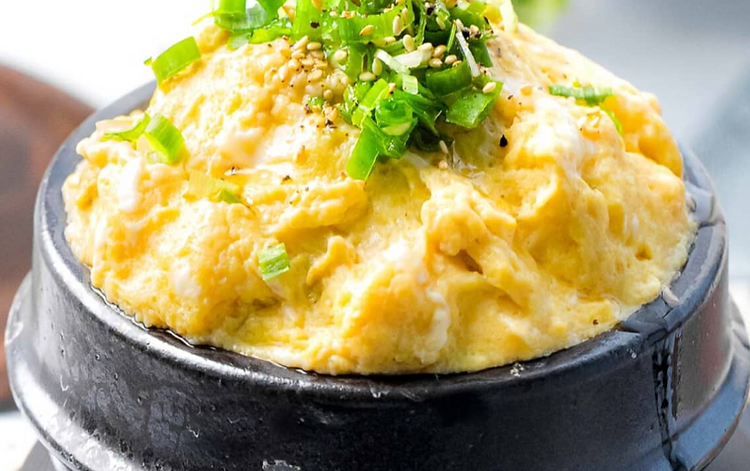About the Recipe

Ingredients
4 large eggs
5 Tablespoons water or broth - see Note 1
⅓ teaspoon sea salt
1 teaspoon toasted sesame oil
pinch of black pepper
chopped green onions - for garnish
sesame seeds - for garnish
Preparation
WHAT IS KOREAN STEAMED EGGS (GYERAN JJIM)?
Korean steamed eggs, also called 'Gyeran Jjim' in Korea, is a delicious and easy Korean side dish that's made with eggs, water or broth, and seasoned with salt, sesame oil, and green onions.
('Gyeran' translates to egg in Korean and 'Jjim' translates to steamed, hence the name Korean steamed eggs.)
This egg side dish (banchan) can also be called Korean volcano steamed eggs because of it's volcanic cone shape and the steam that's released during the cooking process.
Steaming the eggs results in the eggs expanding in the center as it heats up and cooks.
It not only does it result in an impressive presentation, but it gives you extra fluffy, soft, and light as air eggs that are perfectly tender.
INSTRUCTIONS
Mix the eggs, water/broth, and salt until the whites and yolks are well combined. Optional: For a finer texture, you can strain the mixture.
Pour the egg mixture into a small pot heated over medium heat.
Using a spoon, mix the eggs while scraping the bottom and sides. You should start to see the mixture thicken up as the eggs cook.
When the eggs are about 75% cooked, lower the heat and cover with a domed lid or a heat safe bowl to steam the eggs. Be sure there's enough room for the egg to expand as it steams. After 2 to 3 minutes, you should start to see steam escaping from the cover.
Uncover and garnish with green onions, sesame seeds, sesame oil, and pepper. The steamed eggs should be light and fluffy. Serve immediately and enjoy!
RECIPE TIPS
Korean steamed eggs are traditionally cooked in an earthenware pot (ttukbaegi). If you don't have one, use a pot that holds onto heat well, such as a heavy bottomed pot.
When cooking the eggs, allow large curds to form to give structure and support to the steamed eggs. This helps reduce deflation.
Lower the heat before steaming the eggs to prevent them from burning.
The cover should fit tightly over the pot to allow for proper steaming.
Serve immediately to enjoy the full height of the steamed eggs! Some deflation is naturally similar to a soufflé.
.png)